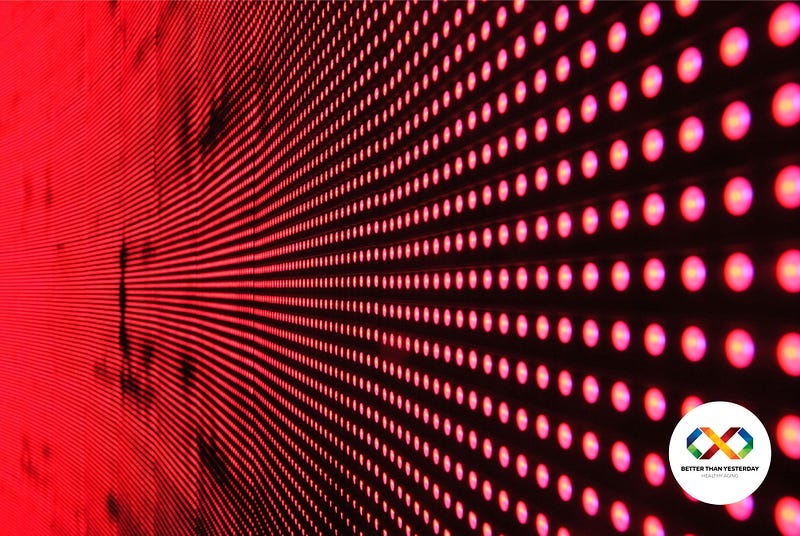Red Light Therapy: The Biohack That Supercharges Your Energy, Skin & Sleep 🔴✨
Ever feel like you need a recharge? Maybe your skin’s looking dull, your energy’s low, or your sleep’s a mess? Well, there’s a…
Ever feel like you need a recharge? Maybe your skin’s looking dull, your energy’s low, or your sleep’s a mess? Well, there’s a science-backed biohack that’s been blowing up lately: Red Light Therapy (RLT).
It’s not just another wellness trend. NASA actually used it to help astronauts heal wounds faster in space (Whelan et al., 2001). Now, it’s everywhere — athletes use it for muscle recovery, dermatologists love it for skin repair, and biohackers swear by it for energy and longevity.
So, what’s the deal with red light therapy?
Red light therapy uses low-level red or near-infrared light (600–1000nm wavelengths) to penetrate deep into your cells. This light stimulates mitochondria (the energy factories in your cells) to produce more ATP — aka the fuel that powers everything in your body. More ATP = more energy, faster healing, and better performance (Hamblin, 2016).
But it’s not just about energy. The benefits go way beyond that.
What can red light therapy do for you?
✅ Boosts energy & performance — More ATP means better endurance, quicker recovery, and less fatigue. Some biohackers use it before workouts to enhance strength and stamina (NIH 2019).
✅ Fights wrinkles & improves skin — It stimulates collagen production, making skin firmer, smoother, and more elastic. Studies also show it helps with acne scars, sun damage, and wound healing (NIH 2014).
✅ Speeds up muscle recovery — Athletes use RLT to reduce inflammation and muscle soreness. Research shows it lowers oxidative stress and accelerates tissue repair after intense exercise (NIH 2016).
✅ Improves sleep & regulates circadian rhythm — Red light exposure at night can increase melatonin production, helping you fall asleep faster and improve sleep quality (NIH 2012).
How to Use Red Light Therapy
🔥 At Home: Affordable LED panels and handheld RLT devices are available. Use them 10–20 min/day, keeping the light 6–12 inches from your skin.
🏥 Clinics & Spas: Many wellness centers offer full-body RLT sessions, especially for pain relief, skin treatments, and muscle recovery.
🌞 Natural Sunlight: Sunrise and sunset provide natural red and near-infrared light, which can have similar benefits.
Does It Really Work?
Science says yes , but like any biohack, consistency is key. The best results happen with daily or regular use over weeks or months. Also, different wavelengths work for different issues (e.g., red light for skin, near-infrared for deeper tissues like muscles and joints).
Should You Try It?
If you struggle with low energy, sleep issues, muscle pain, or skin concerns, RLT could be worth a shot. It’s non-invasive, has no known serious side effects, and is backed by research. But like any wellness tool, it’s not a magic fix — think of it as a powerful upgrade to your health routine.
🧠 Why You Should Only Use Quality Devices
Not all red light therapy devices are created equal. Cheap or poorly made products often use weak LEDs, incorrect wavelengths, or unsafe heat levels. These won’t deliver results, and could even cause skin irritation.
✅ Look for:
Wavelengths in the 630–660nm (red) and 810–850nm (near-infrared) range
Clinically tested output (irradiance) around 20–100 mW/cm²
Certifications like FDA-cleared or CE-marked for safety
🛑 Avoid:
Unverified brands sold via marketplaces with no transparency
Devices with vague specs or no mention of irradiance or testing
If you're investing in RLT, make sure it's from a trusted manufacturer with proven results and real customer feedback. You're literally shining light on your cells, make it count.




